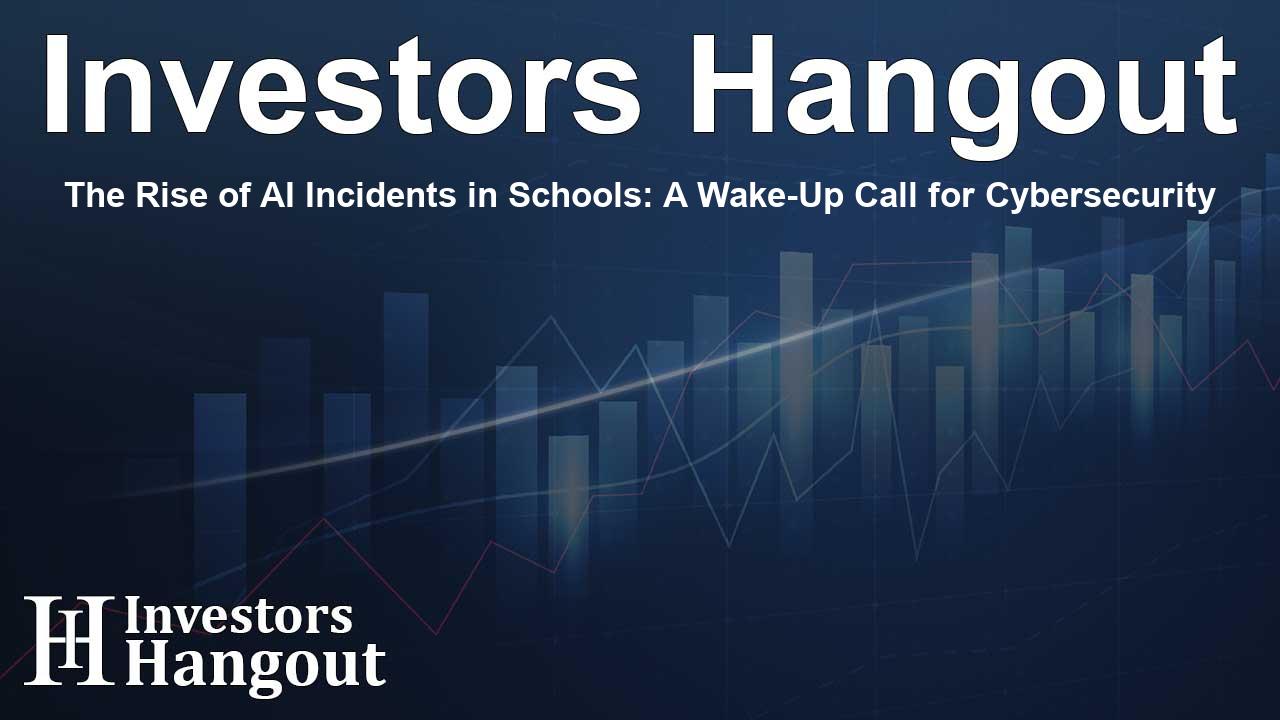The Rise of AI Incidents in Schools: A Wake-Up Call for Cybersecurity

Significant Findings on AI in Education
A recent report sheds light on the growing integration of Artificial Intelligence (AI) in educational settings, revealing a startling trend of cybersecurity incidents. Keeper Security, a prominent provider of cybersecurity solutions, has conducted extensive research to understand the impact of AI on educational institutions, highlighting the risks that accompany its adoption.
Widespread Adoption with Fragmented Security
The research involved over 1,400 educational leaders from primary, secondary, and higher education sectors. The findings reveal a clear picture: while schools are embracing AI technology, their preparedness to handle the accompanying cybersecurity threats remains insufficient. It was found that 41% of schools have faced AI-related cyber incidents, which include phishing attacks and the proliferation of harmful content created by students.
Concerning Statistics
Among the alarming findings are:
- Phishing Attacks and Misinformation: Schools have reported various phishing campaigns and misinformation incidents, indicating a pressing need for robust protective measures.
- Harmful AI Content: Almost 30% of schools experienced instances of dangerous AI-generated content, such as deepfakes.
- Guidelines, but No Policies: Despite 86% of institutions allowing students to use AI tools, many lack formalized policies to govern usage.
- Widespread Concern: A significant 90% of education leaders expressed concerns over AI-related cybersecurity threats, showcasing the urgency for action.
- Low Confidence in Threat Recognition: Only a quarter of respondents felt very confident in identifying AI-enabled threats.
The Need for a Zero-Trust Approach
Darren Guccione, CEO and Co-founder of Keeper Security, remarks on the duality of AI's promise and its perils. "AI is redefining the future of education, creating extraordinary opportunities for innovation and efficiency. But opportunity without security is unsustainable," he stated. This highlights the need for educational institutions to adopt a zero-trust, zero-knowledge approach to safeguard sensitive information.
Keeper Security's Role
Keeper provides advanced cybersecurity measures tailored for the education sector. Its unified Privileged Access Management (PAM) platform encompasses enterprise password management, secrets management, and zero-trust network access. These solutions equip schools to manage sensitive data securely, ensuring compliance and minimizing breach exposure.
A Call for Collective Action
Anne Cutler, Cybersecurity Evangelist at Keeper Security, emphasizes that cybersecurity should no longer be regarded as a mere back-office function. Instead, it plays a vital role in protecting students and educators alike. As AI continues to permeate classrooms, the decisions made today will shape the future landscape of educational technology.
To reinforce its commitment to enhancing cybersecurity in education, Keeper has launched the Flex Your Cyber initiative. This public service campaign offers resources aimed at promoting safe online practices among students and educators. Collaborating with organizations like KnowBe4 and the National Cybersecurity Alliance, the initiative provides engaging materials tailored to various age groups.
Conclusion: Embracing AI Responsibly
The future of education is undoubtedly intertwined with Artificial Intelligence. However, as research indicates, the adoption of AI must be matched with appropriate security measures. With nearly half of schools experiencing AI-related incidents, a proactive approach is necessary. Only by integrating comprehensive cybersecurity policies alongside technological advancements can educational institutions truly harness the benefits of AI.
Frequently Asked Questions
What is the main finding of the Keeper Security report?
The report reveals that 41% of educational institutions have faced AI-related cybersecurity incidents, highlighting vulnerabilities associated with AI adoption.
Why are schools vulnerable to AI-related threats?
Despite the integration of AI tools in educational settings, most schools lack formal policies to address potential cybersecurity risks.
What are some examples of AI-related incidents reported?
Schools have reported incidents such as phishing campaigns, misinformation, and harmful content generated by students, like deepfakes.
How can schools improve their cybersecurity posture?
Adopting a zero-trust approach, implementing comprehensive cybersecurity policies, and providing training for staff and students are essential steps for improvement.
What initiatives is Keeper Security undertaking for education?
Keeper Security launched the Flex Your Cyber initiative, providing resources and training aimed at enhancing online safety for students and educators.
About The Author
Contact Logan Wright privately here. Or send an email with ATTN: Logan Wright as the subject to contact@investorshangout.com.
About Investors Hangout
Investors Hangout is a leading online stock forum for financial discussion and learning, offering a wide range of free tools and resources. It draws in traders of all levels, who exchange market knowledge, investigate trading tactics, and keep an eye on industry developments in real time. Featuring financial articles, stock message boards, quotes, charts, company profiles, and live news updates. Through cooperative learning and a wealth of informational resources, it helps users from novices creating their first portfolios to experts honing their techniques. Join Investors Hangout today: https://investorshangout.com/
The content of this article is based on factual, publicly available information and does not represent legal, financial, or investment advice. Investors Hangout does not offer financial advice, and the author is not a licensed financial advisor. Consult a qualified advisor before making any financial or investment decisions based on this article. This article should not be considered advice to purchase, sell, or hold any securities or other investments. If any of the material provided here is inaccurate, please contact us for corrections.
